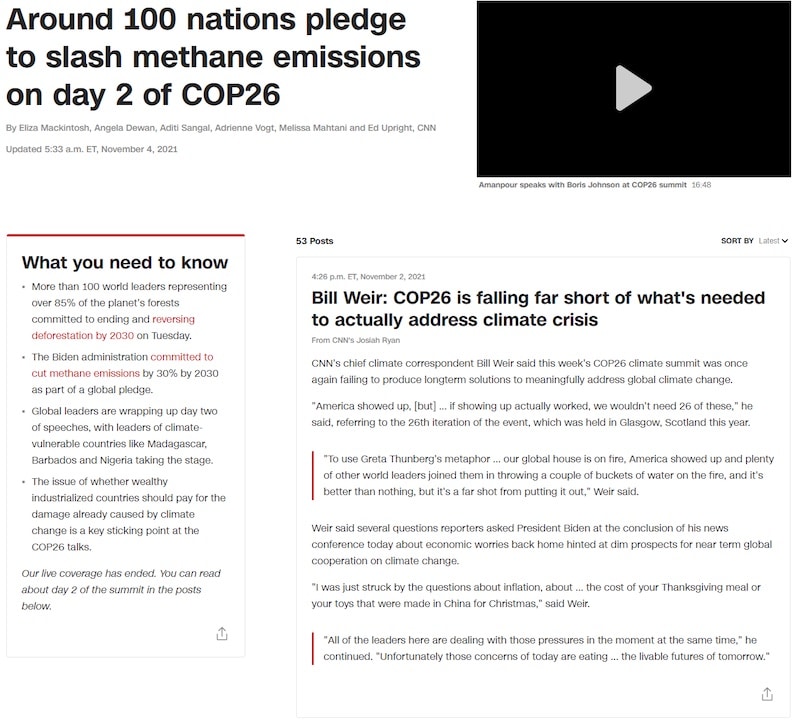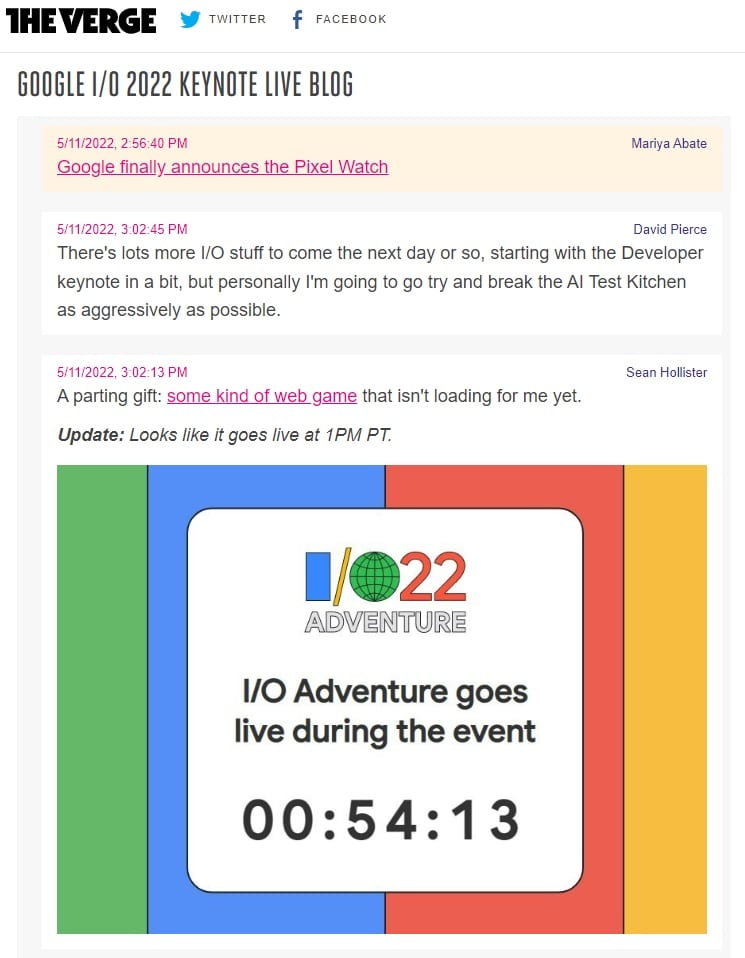A live blog is a communication platform to cover rapidly developing news stories and events. While this concept has been around for years, journalists and others are still finding new ways to use live blogging to bring important information to the public. Let us uncover what is a live blog, how it impacts live engagement and some of the benefits
What is Live Engagement?
Live engagement is about interacting with your audience in real-time through digital tools. It creates instant, meaningful connections that keep customers engaged and coming back. Think of it as the digital equivalent of a face-to-face conversation.
Examples of Live Engagement
- Live Chat Sessions: Customers get immediate answers to their questions, enhancing their shopping experience.
- Real-Time Customer Support: Problems are solved quickly, leading to higher satisfaction.
- Live Blogging for Events: Keeps your audience updated with real-time content, making them feel part of the action.
- Interactive Polls and Quizzes: Engage your audience with instant feedback, keeping them entertained.
How A Live Blog Works
A live blog gives the reader a stream of updates about a rapidly developing news story. For example, journalists have used live updating for years to cover elections where vote counts and other factors constantly change.
A successful live blog requires an app like Arena Live Blog installed on your website. Second, you need one or more people to create engaging content updates for your live blog. Third, a live blog is successful when it is about an event that many people find interesting.
Live Blog For News
Thanks to innovative journalists, the live blog concept (also known as live blogging) first became well-known. The live blog approach to news coverage is best suited to news stories with rapidly changing developments and intense public interest. Live blogs are commonly used to cover elections and significant sporting events.
A few examples will illustrate how journalists use live blogs to provide up-to-date coverage and analysis of current affairs.
Successful News Live Blogs
These live blog examples show how news organizations have used live blogs to engage their audiences.
The 2021 Climate Summit
The last climate summit was held in Glasgow in the fall of 2021. Given the impact of climate change on the world, many world leaders attended the United Nations event. CNBC had a live blog dedicated to the event as it unfolded.

CNBC published posts at ad posts at 12:30 pm, 12 pm, 9 am, 8:44 am, 8:31 am, 7:28 am, 6:28 am, and other times in a single day’s coverage. Each of these posts was relatively short, typically featuring an attention-grabbing quote. These updates would be too short to work as a standalone article. By posting multiple updates throughout the date, CNBC gave its audience a reason to keep returning to their website.
CNN also had a live blog dedicated to covering the climate summit. CNN’s approach to covering the event featured even more updates. In a single live blog post, CNN published over fifty short updates. Like CNBC, the CNN live blog coverage featured quotes from politicians. However, CNN also included photos for most of their posts.

Image Credit: CNN
The 2022 Invasion of Ukraine
Earlier this year, Russian troops invaded Ukraine. As the war unfolded, journalists have used live blogs to tell the story from various perspectives.

Image Credit: Washington Post
The Washington Post live blog on the war features a multi-media approach with text posts, videos, and images from the front. Users also can listen to the live blog updates in audio format. Offering live blog content in audio format is a creative way to increase the reach of your live blog. The Washington Post live blog includes updates from the war zone and broader developments such as the impact of the war on trade.
The ABC News live blog concerning the war provides coverage of the war in a single day. The news outlet reported on the changing diplomatic situation as more countries considered NATO membership. The live blog also features photos of the war, political leaders, and other aspects of the developing situation.

Image Credit: ABC News
As the war continues to develop, news outlets are likely to continue using live blogging. As the war impacts more and more people worldwide, interest in live updates is likely to increase.
Live Blog Benefits For News
Running a live blog on a breaking news story is one of the best ways to stand out. A live blog is a powerful way to present your coverage when a critical news story comes up.
By running a live blog covering a significant event, news outlets give their audiences a reason to keep coming back for regular updates. As we’ve seen in some of the examples above, you can publish several updates per hour in some cases. Each live blog post adds new insight to your audience and the opportunity to generate revenue.
Live Blog For Companies
While journalists and media outlets most commonly use live blogging, companies can also use it. For a corporate live blog to gather attention, think about your event from the perspective of your favorite journalists at NBC News, Fox News, or other publications. It’s essential to report the facts of the event and help viewers understand why the issue matters.
The easiest way for a company to get started with a live blog is to focus on conferences and trade shows. Specifically, start with conferences that already draw significant crowds like the annual events run by Apple, Facebook, and Google.
There are two main ways to use a live blog with a significant corporate event. If your company is the host of the event, you can run an official live blog to share highlights from the event. This is a powerful way to extend the value of the event beyond those attending. Alternatively, bloggers and specialized media outlets can use live blogs to cover the event directly.

Image Credit: The Verge
To see how a live blog can work for company news, look at The Verge. The publication’s live blog had a live blog focused on the event’s keynote address. Unlike the live blog examples covered above, The Verge’s updates are closer to tweets than traditional posts. Many of the updates are just a few sentences long. The Verge live blog also included some image-only posts.
For a different perspective, look at TechRadar’s coverage of the Mobile World Congress 2022. TechRadar took a team approach to develop its coverage with staff on the ground at the event in Barcelona and others providing support from further afield. The TechRadar live blog also emphasizes short updates such as bullet-point lists of new products.

Image Credit: TechRadar
TechRadar’s live blog also shows how to respond to the uneven nature of events. The live blog points out that most companies participating in the event make product announcements early. That begs the question – how do you sustain the live blog if the most prominent news has already happened? The TechRadar solution is to add other types of coverage like analysis and feature-length articles to its live blog.
How To Get Live Blog Coverage For Your Company
Getting early coverage for a new product through a live blog is beneficial. There are a few ways you can increase your odds of earning coverage. Put yourself in the journalist’s shoes for a moment. Reporters and bloggers often want to be the first to cover a story. So, consider offering exclusive coverage for some time to get your company featured on a live blog. In addition, it is essential to prepare high-quality photos and images that can be freely used. You don’t want your big announcement to be undermined by out-of-focus or unclear photos taken at an event.
10 Tips To Launch Your First Live Blog
Launching your first live blog is exciting! Use these tips to plan and make the most of your live blog opportunity.
1. Identify live blog opportunities
Setting up your foundation for live blog success starts with selecting the right opportunity. Think about what your audience is excited about. Are they passionate about politics? If so, reading in-depth coverage of an election, including commentary on debates, might be a good fit. Ideally, your live blog should ride a wave of interest if it already attracts significant interest.
2. Install and test your live blog app
Set up your live blog software once you have a clear live blog opportunity in mind. Arena live blog is designed to be installed and set up quickly. Arena’s Live Blog solution is designed to be installed fast, so you can be up and running in less than an hour.
Once you choose your live blog technology, install and test it a day or two before the event. Testing the platform in advance is brilliant because you want to minimize embarrassing mistakes in front of your audience.
3. Prepare posts and coverage in advance
Even the most exciting breaking news event will have slow periods. Take inspiration from TechRadar’s live blog. They prepared analysis and feature articles in advance of covering a technology event. Aim to prepare at least two or three posts in advance of the event so that you can prepare accordingly.
Tip: Some breaking news stories and events develop so quickly that it is challenging to prepare content in advance. In that case, you can still prepare but in a different way. For example, contact a few people to ask if they would be willing to be interviewed for your live blog.
4. Start your live blog early
Attracting an audience to a new live blog can take some time. With scheduled events like elections and conferences, starting your coverage early gives you the advantage of building an audience faster.
5. Use a variety of media in your posts
While most live blogs are built on a foundation of written posts, that is no longer your only option. At a minimum, include original photos and images in your posts. Short videos can also work well if you can produce videos quickly.
6. Emphasize short updates
By convention, live blog posts are relatively short. Most live blogs are a few short paragraphs in length. If you have longer updates to share, consider posting an entire article elsewhere and then creating a short post to link to that post in your live blog.
7. Recognize the need for corrections
A live blog assumes rapid coverage of a developing event by its nature. If your coverage has an error, resist the temptation to delete the older update.
Deleting an older incorrect update may be interpreted as covering up the news. Instead, include a link to another post where you provide the correction. Responding quickly to errors is the better way to engage your audience.
8. Engage your audience with live chat
Most traditional live blogs are one-way conversations with the minimal ability for the audience to participate. It doesn’t have to be that way! Add a live chat app to your website to bring your audience even deeper into the conversation.
Find out more about Arena Live Chat and how easily it can be installed on any website in minutes. Arena also supports popular publishing platforms like WordPress.
9. Share your live blog on social media
Want to get more people on your live blog? Use a live blog app that offers one-click social media sharing. Sharing a few posts to your social media accounts is an excellent way to bring more people back to your website.
10. Get ready for your next live blog
After your live chat session ends, it’s time to take stock of the event. Meet with your team and review your performance. Start with the positive – what topics resonated most with your audience? Keep those topics and angles in mind when planning your next live blog.
Next, look for opportunities to improve. For example, your staff might have found it very stressful to publish a large number of updates throughout the day. It’s possible to ease this stress in a few ways. You can prepare more content in advance of the event. Or you can add additional staff to the live blog or reduce the number of posts.
Types of Live Engagement Tools
Live Chat
Live chat allows customers to ask questions and get immediate responses. For example, during a product launch, live chat can help answer questions about features, availability, and pricing instantly.
Live Blogging
Perfect for events, product launches, or breaking news. It keeps your audience engaged with constant updates, photos, and videos.
Commerce AI
Commerce AI provides real-time product recommendations based on customer behavior, increasing conversion rates.
Interactive Polls and Quizzes
Engage your audience with instant feedback, keeping them entertained during live broadcasts or standalone content.
Benefits of Live Engagement
Enhances Customer Satisfaction
Immediate responses to queries mean happier customers. Live engagement ensures they get the help they need, when they need it.
Increases Conversion Rates
Personalized product recommendations during live interactions can significantly boost sales.
Drives User Retention
Constant interaction keeps users engaged and coming back.
Provides Valuable Insights
Real-time data collection and analysis offer deep insights into customer behavior, refining marketing strategies.
Builds Community Loyalty
Regular interaction fosters a sense of community and loyalty.
How Live Engagement Works
Real-Time Chat and Messaging
Facilitates instant communication between customers and support agents, leading to higher satisfaction.
Dynamic Live Blogging
Keeps your audience updated with real-time content, ensuring they stay informed and engaged.
AI-Powered Features
Automates content sharing and moderation, keeping your audience engaged with fresh and relevant content.
Social Media Integration
Drives traffic from social platforms to your site, engaging followers and driving top-of-funnel audiences into your marketing funnel.
How to Implement Live Engagement Tools
Step 1: Choose the Right Platform
Pick a platform that offers the live engagement tools you need. Arena offers live chat, live blogging, and AI-driven solutions all in one place.
Step 2: Integrate with Existing Systems
Ensure the platform integrates with your current website and CRM systems without disrupting workflows.
Step 3: Train Your Team
Provide comprehensive training to ensure effective use of the tools.
Step 4: Monitor and Optimize
Use analytics to monitor performance and gather insights, refining your strategy.
Tips for Maximizing Live Engagement
Engage with Personalized Content
Tailor interactions based on user behavior to make your audience feel valued.
Use Interactive Elements
Engage your audience with polls, quizzes, and live updates.
Provide Instant Support
Ensure live chat support is always available to address customer queries instantly.
Collect Feedback
Gather real-time feedback to make informed decisions and improve offerings.
Promote Through Social Media
Use social media channels to drive traffic and engagement. Arena’s Social Media Integration feature makes it easy.
The Simple Way To Get Started In Live Blogging
Your next step is simple and easy. You can install Arena’s liveblogging software in minutes. After you have the software installed, set aside time to brainstorm ideas.
The first step in launching your Live Blog is to sign up for Arena Live Blog. It can be installed on nearly any website in sixty seconds by uploading a short piece of code. Start your free 14-day trial of Arena Live Blog.



